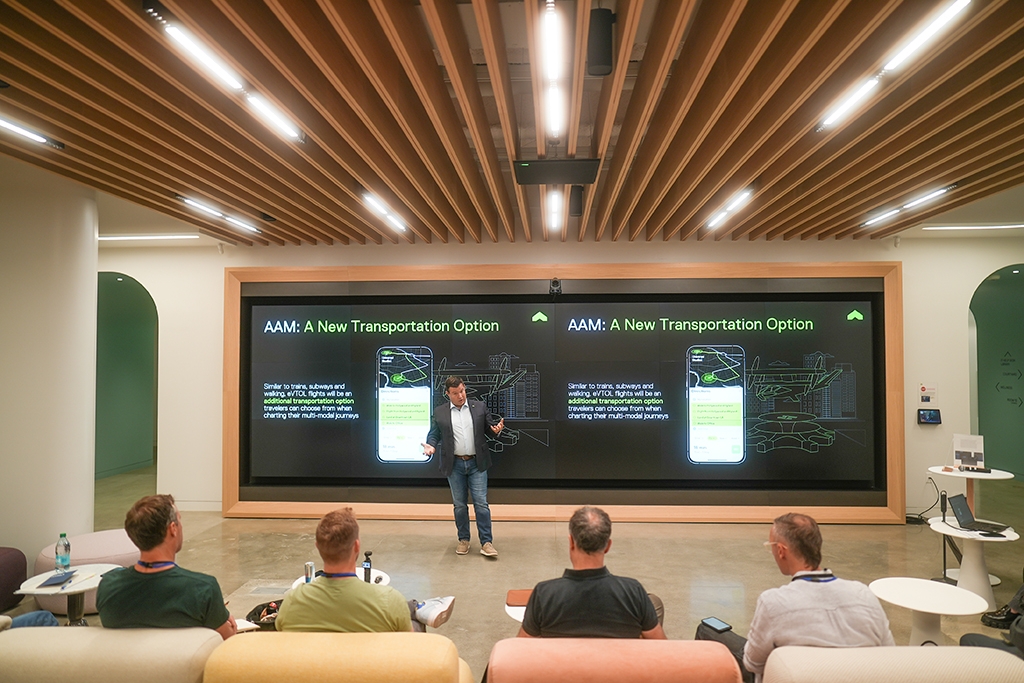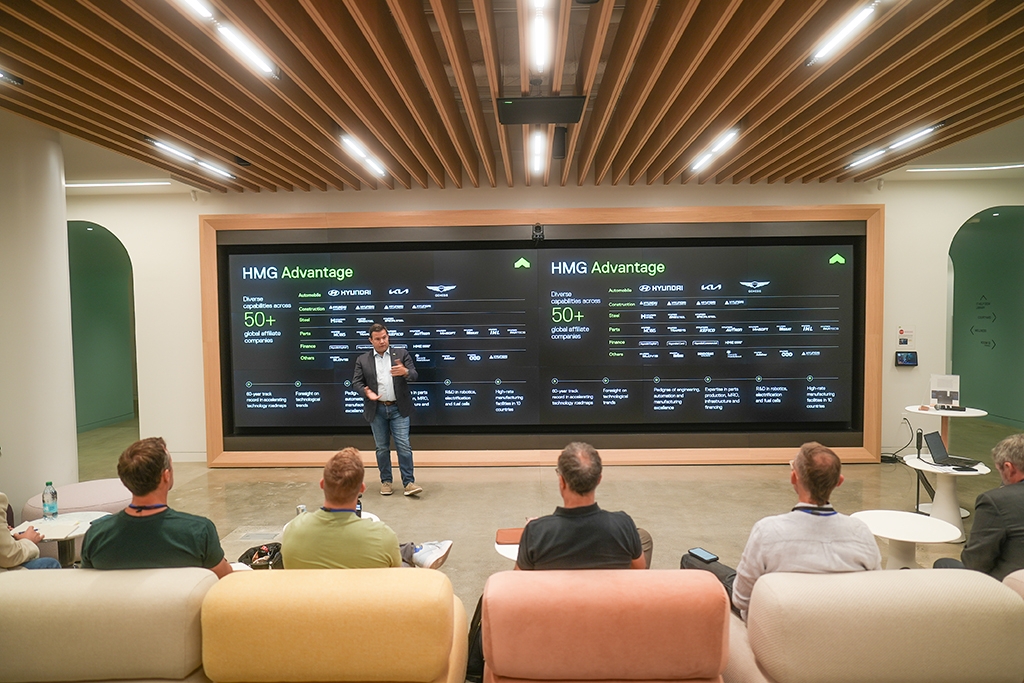Hyundai's next frontier in mobility: Electric Flying Vehicle
07 Nov 2024|116 views
Picture this: bumper-to-bumper traffic on the Pan Island Expressway, the relentless stop-and-go as cars inch forward under the midday sun. Major cities around the world - think Kuala Lumpur on a weekend night or Manila during the daily rush hour - share this experience as urbanisation surges and roadways reach capacity. The question is, what's next? How do we improve mass transit beyond simply adding another lane?
Hyundai believes the answer lies in taking to the skies. The automotive giant has launched Supernal, a subsidiary focused on advanced air mobility (AAM), to explore an entirely new form of commuting - one that could soon involve electric flying vehicles. With Supernal's plans for electric VTOL (vertical take-off and landing) vehicles, Hyundai envisions a revolutionary shift in last-mile travel and inter-city transportation, leveraging electric or hybrid-electric propulsion for sustainable, efficient urban and regional air travel.
Hyundai's Vision for the Future: Introducing Supernal
Founded as Hyundai Group's dedicated wing for AAM, Supernal has bold ambitions to redefine urban transport with a fleet of electric VTOL vehicles. Set to launch by 2028, Supernal aims to make short-haul flights as easy as catching a bus or taxi, bypassing congested roadways. Imagine a cab-hailing app, but instead of a car, you're booking an all-electric air taxi. Just as apps like Grab transformed how we hail a ride, Supernal aims to create the solution for instant flying transport options in the near future.
Supernal's mission isn't limited to luxury or the rich; it's about solving logistical and environmental challenges tied to population growth and limited space in urban centers. With electric flying vehicles designed to whisk passengers through congested areas and drastically reduce commute times, Hyundai is betting that this frontier will soon become a reality. Think of a 2km journey in Bangkok that takes 45 minutes by cab, cut to a 5-minute flight - this is the vision Hyundai has in mind.
Challenges Facing AAM and Supernal's Journey to Overcome Them
Yet AAM isn't without its hurdles. For Supernal's vision to succeed, Hyundai must address several key challenges. Safety is a top concern, especially as even ground-based autonomous vehicles like Waymo or Tesla's Full Self-Driving face ongoing reliability issues. If self-driving cars are still encountering obstacles, what of flying vehicles that introduce an added dimension of altitude and potential risks?
Supernal is addressing these safety concerns in AAM's early phases by partnering with experienced operators to pilot its vehicles, ensuring that safety protocols are met as these systems enter the skies. Initially, skilled pilots will oversee every journey, similar to a charter helicopter service. The ultimate goal is to transition these AAMs to full autonomy, but the initial focus on piloted operations provides a controlled environment to rigorously test and validate safety standards.
Another major challenge is regulation. AAM will require new policies governing airspace management, traffic control, and standards for battery-powered aircraft, all of which are under development. Supernal is already working closely with the Federal Aviation Administration (FAA) in the U.S.A to set these standards, and similar partnerships are expected globally, each tailored to local regulatory needs.
Supernal is also collaborating with airlines to gain insights and feedback from operators (pilots), who will need training in AAM's unique operating requirements, which differ from both fixed-wing and rotary-wing aviation. Moreover, to support a network of eVTOL vehicles, extensive infrastructure will be necessary, including power solutions capable of delivering the immense energy needed to sustain these fleets.
The Road Ahead: Turning Vision into Reality
Supernal recognises that turning advanced air mobility from concept to reality is no small feat, involving significant challenges in engineering, safety, and regulation. With an ambitious goal to enter service by 2028, Hyundai Motor Group's robust support provides the resources and expertise needed for this next-generation transportation vision.
Currently, Supernal employs a team of approximately 700 professionals across three U.S.A locations: Washington, D.C., Fremont, and Irvine. Each center plays a key role, with Washington, D.C. focusing on legislative and regulatory engagement, Fremont handling advanced research and development, and Irvine specialising in engineering.
Supernal's vision for advanced air mobility could redefine urban navigation, making aerial travel as accessible and routine as ground-based options. With an ambitious 2028 launch goal, teams across the U.S.A, and Hyundai Motor Group's support, Supernal aims to transform AAM into a viable solution for urban congestion. As technology, regulatory frameworks, and infrastructure align, Hyundai's AAM could bring mass-market air taxis within reach, offering a more efficient, less stressful way to move through cities and reducing the burden on urban roadways.
Picture this: bumper-to-bumper traffic on the Pan Island Expressway, the relentless stop-and-go as cars inch forward under the midday sun. Major cities around the world - think Kuala Lumpur on a weekend night or Manila during the daily rush hour - share this experience as urbanisation surges and roadways reach capacity. The question is, what's next? How do we improve mass transit beyond simply adding another lane?
Hyundai believes the answer lies in taking to the skies. The automotive giant has launched Supernal, a subsidiary focused on advanced air mobility (AAM), to explore an entirely new form of commuting - one that could soon involve electric flying vehicles. With Supernal's plans for electric VTOL (vertical take-off and landing) vehicles, Hyundai envisions a revolutionary shift in last-mile travel and inter-city transportation, leveraging electric or hybrid-electric propulsion for sustainable, efficient urban and regional air travel.
Hyundai's Vision for the Future: Introducing Supernal
Founded as Hyundai Group's dedicated wing for AAM, Supernal has bold ambitions to redefine urban transport with a fleet of electric VTOL vehicles. Set to launch by 2028, Supernal aims to make short-haul flights as easy as catching a bus or taxi, bypassing congested roadways. Imagine a cab-hailing app, but instead of a car, you're booking an all-electric air taxi. Just as apps like Grab transformed how we hail a ride, Supernal aims to create the solution for instant flying transport options in the near future.
Supernal's mission isn't limited to luxury or the rich; it's about solving logistical and environmental challenges tied to population growth and limited space in urban centers. With electric flying vehicles designed to whisk passengers through congested areas and drastically reduce commute times, Hyundai is betting that this frontier will soon become a reality. Think of a 2km journey in Bangkok that takes 45 minutes by cab, cut to a 5-minute flight - this is the vision Hyundai has in mind.
Challenges Facing AAM and Supernal's Journey to Overcome Them
Yet AAM isn't without its hurdles. For Supernal's vision to succeed, Hyundai must address several key challenges. Safety is a top concern, especially as even ground-based autonomous vehicles like Waymo or Tesla's Full Self-Driving face ongoing reliability issues. If self-driving cars are still encountering obstacles, what of flying vehicles that introduce an added dimension of altitude and potential risks?
Supernal is addressing these safety concerns in AAM's early phases by partnering with experienced operators to pilot its vehicles, ensuring that safety protocols are met as these systems enter the skies. Initially, skilled pilots will oversee every journey, similar to a charter helicopter service. The ultimate goal is to transition these AAMs to full autonomy, but the initial focus on piloted operations provides a controlled environment to rigorously test and validate safety standards.
Another major challenge is regulation. AAM will require new policies governing airspace management, traffic control, and standards for battery-powered aircraft, all of which are under development. Supernal is already working closely with the Federal Aviation Administration (FAA) in the U.S.A to set these standards, and similar partnerships are expected globally, each tailored to local regulatory needs.
Supernal is also collaborating with airlines to gain insights and feedback from operators (pilots), who will need training in AAM's unique operating requirements, which differ from both fixed-wing and rotary-wing aviation. Moreover, to support a network of eVTOL vehicles, extensive infrastructure will be necessary, including power solutions capable of delivering the immense energy needed to sustain these fleets.
The Road Ahead: Turning Vision into Reality
Supernal recognises that turning advanced air mobility from concept to reality is no small feat, involving significant challenges in engineering, safety, and regulation. With an ambitious goal to enter service by 2028, Hyundai Motor Group's robust support provides the resources and expertise needed for this next-generation transportation vision.
Currently, Supernal employs a team of approximately 700 professionals across three U.S.A locations: Washington, D.C., Fremont, and Irvine. Each center plays a key role, with Washington, D.C. focusing on legislative and regulatory engagement, Fremont handling advanced research and development, and Irvine specialising in engineering.
Supernal's vision for advanced air mobility could redefine urban navigation, making aerial travel as accessible and routine as ground-based options. With an ambitious 2028 launch goal, teams across the U.S.A, and Hyundai Motor Group's support, Supernal aims to transform AAM into a viable solution for urban congestion. As technology, regulatory frameworks, and infrastructure align, Hyundai's AAM could bring mass-market air taxis within reach, offering a more efficient, less stressful way to move through cities and reducing the burden on urban roadways.
Latest COE Prices
May 2025 | 2nd BIDDING
NEXT TENDER: 04 Jun 2025
CAT A$102,501
CAT B$116,988
CAT C$63,189
CAT E$118,010
View Full Results Thank You For Your Subscription.


























